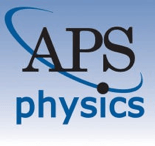
PHYSICAL REVIEW A
Scope & Guideline
Illuminating the Path of Optical Advancements
Introduction
Aims and Scopes
- Quantum Mechanics and Foundations:
Research exploring the foundations of quantum mechanics, including quantum interpretation, measurement theory, and contextuality. - Atomic and Molecular Physics:
Studies focused on the properties and interactions of atoms and molecules, including spectroscopy, collision processes, and chemical reactions. - Quantum Information and Computation:
Investigations into quantum computing, quantum algorithms, quantum cryptography, and the theory of quantum information. - Optical Physics:
Research on the interaction of light with matter, including nonlinear optics, quantum optics, and photonic devices. - Condensed Matter Physics:
Exploration of many-body systems, phase transitions, and collective phenomena in condensed matter, with applications in quantum gases and superconductors. - Quantum Dynamics and Thermodynamics:
Studies on the dynamics of quantum systems, including non-Markovian processes, thermodynamic cycles, and quantum engines. - Quantum Control and Measurement:
Techniques and methods for controlling quantum systems and measuring their properties, including error correction and feedback mechanisms. - Topological Phases and Quantum Materials:
Research on topological phases of matter, including Weyl semimetals, topological insulators, and their implications for quantum transport.
Trending and Emerging
- Quantum Technology and Applications:
There is a rising focus on the practical applications of quantum mechanics, including quantum computing, quantum communication, and quantum sensing technologies. - Non-Hermitian Physics:
Research into non-Hermitian systems, particularly in the context of topological phases and exceptional points, is rapidly gaining attention. - Machine Learning in Quantum Physics:
The integration of machine learning techniques into quantum physics research is increasingly prevalent, with applications in quantum state preparation, optimization, and simulation. - Quantum Thermodynamics:
Emerging studies on the thermodynamic properties of quantum systems, exploring the interplay between quantum mechanics and thermodynamic principles. - Entanglement and Quantum Correlations:
There is an increasing emphasis on the study of entanglement, nonlocality, and quantum correlations, particularly in multipartite and high-dimensional systems. - Quantum Optomechanics:
Research involving the interaction between light and mechanical systems at the quantum level is on the rise, focusing on applications in precision measurement and quantum information. - Higher-Order Harmonic Generation:
Studies on high-order harmonic generation processes, especially in complex systems and novel materials, are becoming more prominent. - Quantum Simulation of Complex Systems:
The application of quantum simulation techniques to study complex many-body systems and phenomena that are difficult to address classically is emerging as a key area of interest.
Declining or Waning
- Classical Physics Applications:
Topics that intersect with classical physics, such as classical optics and traditional mechanics, have become less frequent as the focus shifts toward quantum phenomena. - Simple Atomic Models:
Research based on simplistic atomic models has waned, giving way to more complex and realistic models that account for many-body interactions and quantum correlations. - Non-Quantum Mechanical Approaches:
Studies employing methods that are not explicitly quantum mechanical have seen a decline, as the field increasingly prioritizes quantum approaches to explain phenomena. - Basic Theoretical Frameworks:
The publication of basic theoretical frameworks without significant advancements or applications has decreased, as the journal emphasizes innovative and applicable research.
Similar Journals
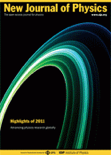
NEW JOURNAL OF PHYSICS
Connecting global minds through groundbreaking physics.NEW JOURNAL OF PHYSICS, published by IOP Publishing Ltd, is a prestigious open-access journal that has been at the forefront of the physics community since its inception in 1998. With an impact factor that places it in the Q1 category of Physics and Astronomy (miscellaneous) and a commendable ranking of #49 out of 243 in the general physics and astronomy category according to Scopus, this journal is recognized for its significant contribution to advancing research in the field. The journal caters to a broad scope of topics, providing a platform for the dissemination of cutting-edge research findings and innovative theoretical explorations. Operating from the United Kingdom, it offers a truly international perspective, making its contents accessible and impactful to a global audience. With robust open-access options, the NEW JOURNAL OF PHYSICS ensures that research findings are freely available, promoting collaboration and knowledge sharing among researchers, professionals, and students alike. This commitment to accessibility, combined with its high-quality content, makes it an essential resource for anyone engaged in the physics community.
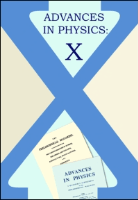
Advances in Physics-X
Exploring the Boundaries of Physics and AstronomyAdvances in Physics-X is a premier open-access journal published by Taylor & Francis Ltd, dedicated to advancing the frontiers of knowledge in the field of Physics and Astronomy. Since its inception in 2016, the journal has established itself as a vital platform for researchers and professionals, showcasing innovative research and cutting-edge theories that influence a broad array of sub-disciplines within physics. With an impressive impact factor and ranked in the 94th percentile among its peers, it resides in the Q1 category for Physics and Astronomy (miscellaneous), indicating its significant contributions to the academic community. Located in the United Kingdom, the journal encourages open access to foster wider dissemination and visibility of scholarly works, aligning with contemporary academic trends that prioritize global knowledge sharing. The ongoing commitment to publishing high-quality research ensures that Advances in Physics-X remains an essential resource for students, industry experts, and academics alike, helping to shape the future of physics research through collaboration and innovation.
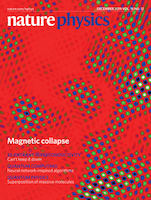
Nature Physics
Advancing Knowledge in the Heart of PhysicsNature Physics is a premier journal dedicated to publishing high-impact research in the realm of physics, brought to you by the esteemed NATURE PORTFOLIO. With its ISSN 1745-2473 and E-ISSN 1745-2481, this journal has established itself as a vital resource for the physics community, enjoying a remarkable Q1 quartile ranking in the Physics and Astronomy category for 2023 and securing an impressive Rank #5/243 and a 98th percentile ranking in Scopus. Since its inception in 2005, Nature Physics has become a catalyst for innovation, featuring cutting-edge research that encompasses a broad spectrum of physics disciplines. Although it operates under traditional subscription models, it maintains a commitment to accessibility through selective publications and editorial excellence. Positioned in Berlin, Germany, this journal is a must-read for researchers, professionals, and students who seek to stay at the forefront of advancements in physics.

JOURNAL OF EXPERIMENTAL AND THEORETICAL PHYSICS
Empowering Researchers to Push the Boundaries of PhysicsJournal of Experimental and Theoretical Physics is a distinguished publication in the field of physics, dedicated to disseminating pioneering research and fostering intellectual discourse in both experimental and theoretical domains. Published by Pleiades Publishing Inc, this journal has established itself as a crucial platform for physicists, with a commendable Q3 categorization in the 2023 rankings within Physics and Astronomy, illustrating its impactful contributions to the discipline. The journal features a wide array of articles that delve into the intricacies of physical theory, experimental techniques, and applications, making it an invaluable resource for researchers, professionals, and students alike. Although it operates under a traditional access model, its longstanding history, dating back to 1980 and converging years through to 2023, underscores its commitment to advancing the frontiers of physics knowledge. The journal is also notable for its engagement in the scientific community, aiming to bridge the gap between theoretical predictions and experimental validations. As a part of Pleiades Publishing, it continues to uphold rigorous standards of academic excellence, inviting contributions that push the boundaries of current understanding and stimulate further exploration in the fascinating world of physics.
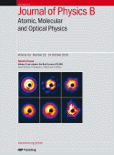
JOURNAL OF PHYSICS B-ATOMIC MOLECULAR AND OPTICAL PHYSICS
Illuminating Insights in Optical Physics ResearchJOURNAL OF PHYSICS B-ATOMIC MOLECULAR AND OPTICAL PHYSICS, published by IOP Publishing Ltd, stands as a key platform within the fields of atomic, molecular, and optical physics. With an impressive history spanning from 1988 to 2024, this journal is recognized for its high-quality research contributions, holding a Q2 ranking in both Atomic and Molecular Physics and Optics, and Condensed Matter Physics, as of 2023. While not an open-access journal, it continues to attract a broad readership and submissions due to its commitment to disseminating knowledge that is at the forefront of contemporary physics research. The journal's ISSN 0953-4075 and E-ISSN 1361-6455 signal its accessibility and relevance in academic discourse. As researchers, professionals, and students delve into the intricate phenomena of quantum mechanics and photonics, they will find pivotal studies and insights within these pages, reinforcing JOURNAL OF PHYSICS B's stature as an esteemed resource in the ever-evolving landscape of physics.

LASER PHYSICS
Pioneering Research in Atomic and Molecular PhysicsLASER PHYSICS is a premier academic journal published by IOP Publishing Ltd, dedicated to the exploration and advancement of fundamental and applied research in the fields of Atomic and Molecular Physics, Optics, Condensed Matter Physics, Industrial and Manufacturing Engineering, and Instrumentation. Since its inception in 1996, the journal has been a vital resource for researchers and professionals, contributing significantly to the collective understanding of laser technology and its applications. With a consistent Q3 ranking across several sub-disciplines in the 2023 categories, LASER PHYSICS is recognized for its rigorous peer-reviewed articles that push the boundaries of current knowledge. Although primarily subscription-based, the journal aims to disseminate high-quality research to enhance the scientific community's collaboration. As the journal continues to shape the future of laser science until 2024 and beyond, it stands as an essential platform for both emerging and established scholars seeking to publish innovative findings in this dynamic field.

OPTICAL AND QUANTUM ELECTRONICS
Elevating Understanding in Quantum and Optical DisciplinesOPTICAL AND QUANTUM ELECTRONICS, published by SPRINGER, is a premier journal dedicated to advancing the fields of atomic and molecular physics, optics, and electronic engineering. With an ISSN of 0306-8919 and an E-ISSN of 1572-817X, this journal has established itself as a vital resource for researchers, professionals, and students alike, contributing to the discourse from its inception in 1969 to its continued publications through 2024. It holds impressive rankings in Scopus, placing within the top percentiles for its categories, specifically in the 64th for Electrical and Electronic Engineering and 63rd for Atomic and Molecular Physics. Though it does not currently offer open access options, the journal's robust impact factor reflects its importance within its field, making it an essential reference point for cutting-edge research and developments in materials science and optics. Through its rigorous peer-review process, OPTICAL AND QUANTUM ELECTRONICS remains committed to publishing high-quality, influential studies that push the boundaries of innovation and understanding in these dynamic areas of science.
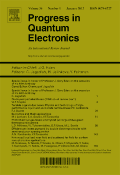
PROGRESS IN QUANTUM ELECTRONICS
Exploring the Frontiers of Quantum InnovationPROGRESS IN QUANTUM ELECTRONICS, published by PERGAMON-ELSEVIER SCIENCE LTD, is a premier international journal that serves as a critical forum for the dissemination of high-quality research in the fields of atomic and molecular physics, electrical engineering, and materials science. With its esteemed Q1 category ranking in several disciplines, including Atomic and Molecular Physics, Electrical and Electronic Engineering, and Electronic, Optical and Magnetic Materials, this journal commands a high impact factor and is recognized for its rigorous peer-review process. Established in 1969 and evolving through various phases, the journal currently compiles cutting-edge research that drives advancements in quantum technologies. Researchers, professionals, and students alike are invited to explore a wealth of knowledge and stay updated on pioneering developments in quantum electronics, enhancing their understanding and contributing to the progression of this dynamic field.

Optoelectronics Letters
Connecting Scholars in the Evolving World of OptoelectronicsOptoelectronics Letters, published by Tianjin University of Technology, is an esteemed platform for the dissemination of innovative research within the fields of atomic and molecular physics, optics, condensed matter physics, and electrical engineering. With its inaugural publication in 2007 and a convergence period extending to 2024, this journal aims to foster scholarly communication and collaboration among researchers and professionals. Although currently lacking an impact factor, it serves a vital niche in the rapidly evolving field of optoelectronics, evidenced by its categorization in the fourth quartile for various physics disciplines and the third quartile in electrical and electronic engineering. Given its ranking dynamics in Scopus, it is an emerging choice for authors seeking to convey their findings on electronic, optical, and magnetic materials. Researchers, students, and industry professionals alike can benefit from its open access options, encouraging a broad dissemination of cutting-edge knowledge that is essential in the advancement of technology and materials science.

PHYSICAL REVIEW LETTERS
Unveiling Breakthroughs in Physical SciencePhysical Review Letters, published by the American Physical Society, is a premier journal in the field of Physics and Astronomy renowned for its rapid dissemination of high-impact research findings. With a distinguished history dating back to 1958 and an impressive ranking of #13 out of 243 in the general physics category, it stands proudly within the Q1 quartile, placing it in the top 6% of journals in its field. The journal focuses on brief reports of significant fundamental research across all areas of physics, making it an essential resource for researchers, professionals, and students seeking to stay at the forefront of developments in their field. Although Physical Review Letters does not offer open access options, its rigorous peer-review process ensures a high standard of quality and relevance in its published articles. With an unwavering commitment to advancing the understanding of physical science, this journal is indispensable for those looking to make a genuine impact in their research endeavors.